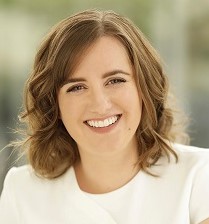Sandplay therapy may be a useful tool in the counselling room for both children and adults, writes Brisbane psychologist Sharyn Jones …
Ever had a time when someone has asked you to express what you’re experiencing in the moment – and you just haven’t had the words for it? To be honest your instant response might actually be “I don’t know?” because really you have no idea.
What would happen if we moved into one of the creative therapies? What if I asked you to simply pick a piece of music, or draw a picture, or maybe one you haven’t heard of – what if I gave you an entire collection of miniature toys, a tray of sand and gave you the opportunity to make me a picture? Whatever you like, use what you want, as many or as few toys as you wish – go ahead.
This is where it gets interesting. Can you imagine that happening? Looking curiously at the hundreds (maybe thousands) of miniatures I’ve offered you:
- Which ones are you drawn to?
- Which ones look interesting?
- Which ones don’t you even notice?
Maybe you instantly know what to do with some, yet others emerge as the picture progresses. Some you go running back to later as you make the picture – “where is it?” you cry inside.
What about the sand? Maybe before you even touched a toy, you are running your hands through the sand, picking it up and letting it fall through your hands with that interesting sensation. Or dusting it off with irritation.
Your therapist? She isn’t interfering, nor critiquing, or labelling, just letting you play, looking on, she’s not touching it either – it’s your creation! But once you have finished, you look at it together, and your share with her your story for the picture as she asks you more about the image you’ve created.
Sandplay therapy gives you the chance to express what is going on in your unconscious mind, and that you may not have the words to say.
Although originally developed in an effort to give children a chance to express themselves during therapy, research later showed that sandplay therapy is just as effective in treating adults as children. When you think about it for a second, one only has to reflect and wonder – what better way to grow and improve than play?
One of the first practitioners to introduce the use of sand and miniatures into her practice was Margaret Lowenfeld (1935) in which she encouraged communication between client (child) and therapist, however, no interpretation was provided.
This changed however when Dora Kalff (1991) took hold of the concept and began to combine it with Carl Jung’s theories.
Theory of Carl Jung
Carl Jung was a Swiss psychiatrist who is considered one of the forefathers of psychology, particularly in regards to the unconscious and personality. To put it simply, Jung believed that our mind (psyche) is composed of a conscious and an unconscious. We also have a gateway as such that manages these different states known as the “ego”.
The unconscious consists of any information or experiences that are not currently held in the conscious mind. These might be past events now forgotten, or future behaviours that are starting to form but yet to emerge.
Inside the unconscious we have thoughts and feelings that are grouped together, as they have similarities. They may be good, bad or simply neutral. These groups will influence our thoughts and behaviour however, they are not able to be understood by our conscious mind.
The more we do to develop conscious awareness of these aspects of the unconscious, the more personal growth and healing and growth in personality development we will experience. This process – called individuation – is when a person makes their unconscious mind conscious, and it is then accepted as part of the person. As much of the contents of the unconscious are brought into awareness as possible and resolved.
Sandplay therapy seeks to accelerate this process by bringing what can often be non-verbal information through the ego and into the conscious mind; essentially, sandplay is considered self-healing.
Now Jung also believed in the presence of a “collective unconscious” deep within the unconscious, that is not personal but rather genetically inherited. It may be a difficult concept to comprehend but think of why in every culture or ethnicity we have dreams at night about being rescued by a prince or knight of some sort. This is known as the hero archetypal. These archetypes, that are also impacting our thoughts and behaviours, can also be facilitated into our conscious mind through sandplay.
Does Sandplay Work?
In a recent study of preschool students who had been victim to a tsunami in South Asia, an intervention of sandplay therapy found a moderate improvement on an emotional and behavioural screening test (Rousseau et al. 2009).
Additionally, a study by Lu et al. (2009) showed that this creative therapy is also effective for use with children with austim.
 Author: Sharyn Jones, B Psych (Hons).
Author: Sharyn Jones, B Psych (Hons).
Sharyn Jones is a Brisbane psychologist with 10 years of experience working with adults, adolescents, children and their parents. Using a combination of cognitive behavioural and solution focused therapies, she aims to facilitate positive changes in client’s lives so that they can achieve and obtain their desired goals.
To make an appointment try Online Booking. Alternatively, you can call Vision Psychology Brisbane on (07) 3088 5422.
References:
- Kalff, D.M. (1991). Introduction to Sandplay Therapy. Journal of Sandplay Therapy, 1 (1).
- Lowefeld, M. (1935). Play in Childhood. Cambridge University Press: Cambridge.
- Lu, L., Peterson, F., Lacroix, L., and Rousseau, C. (2011). Stimulating creative play in children with autism through sandplay. The Arts in Psychotherapy, 37 (1), 56-64.
- Rousseau, C., Benoit, M., Lacroix., and Gauthier., M. (2009). Evaulation of a sandplay program for pre-schoolers in a multiethnic neghborhood. British Journal of Social Psychology, 50 (6), 743-750.